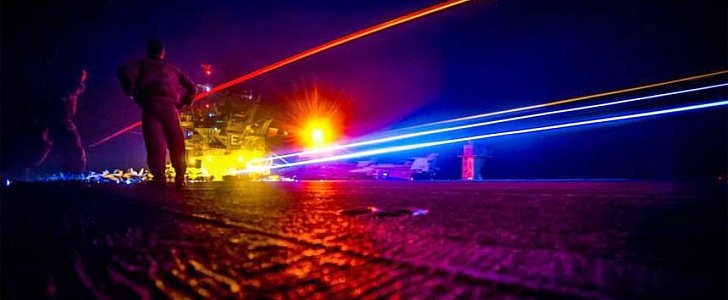They may be a little bit upset after losing a $30 billion contract put out by the US Army, but that won’t stop the global defense company from trying to be the best in the game. And with ATHENA, a ground-based 30-kilowatt fiber laser weapon, that’s exactly what they are after.
The past years, Lockheed Martin has been researching and developing a new high-powered laser weapon that could change the battlefield. Earlier this year, they took one of the prototypes out on the field and tested it on a wagon. It didn’t take long for the laser beam to disable the truck and even though it didn’t look that spectacular, it surely was.
The same company has now announced they are ready to start production of that exact weapon. Not only will the US army use it on the battlefield in about a year from now, but they will also make sure it’s a lot more powerful than the initial prototype.
The first laser built using the modular technique – which is the technology that makes it better than previous models - will be a 60-kilowatt system for a U.S. Army vehicle. That’s about the double of the one they used with the truck in March.
Just to make a better picture of how much power that is, you can always check out the video below. It sees YouTuber Styropyro shooting a 40-watt laser shotgun. Put it this way, the weapon the army is using has a starting power of 60,000-watt.
That is what you’d regularly call the stock model, considering that the Army has the option to add more modules and increase power from that to 120kW or 120,000-watt as a result of the laser’s modularity. How do they get the laser beam to get that intense?
“Lockheed Martin’s laser combines multiple fiber modules to generate an intense laser beam. The layered approach reduces the chance for mission disruption as a result of a component failure and minimizes the need for frequent maintenance or repair. While seemingly complex, the laser is easily operated by a single person.”
Well, that takes care of the drone problem, doesn’t it?
The same company has now announced they are ready to start production of that exact weapon. Not only will the US army use it on the battlefield in about a year from now, but they will also make sure it’s a lot more powerful than the initial prototype.
The first laser built using the modular technique – which is the technology that makes it better than previous models - will be a 60-kilowatt system for a U.S. Army vehicle. That’s about the double of the one they used with the truck in March.
Just to make a better picture of how much power that is, you can always check out the video below. It sees YouTuber Styropyro shooting a 40-watt laser shotgun. Put it this way, the weapon the army is using has a starting power of 60,000-watt.
That is what you’d regularly call the stock model, considering that the Army has the option to add more modules and increase power from that to 120kW or 120,000-watt as a result of the laser’s modularity. How do they get the laser beam to get that intense?
“Lockheed Martin’s laser combines multiple fiber modules to generate an intense laser beam. The layered approach reduces the chance for mission disruption as a result of a component failure and minimizes the need for frequent maintenance or repair. While seemingly complex, the laser is easily operated by a single person.”
Well, that takes care of the drone problem, doesn’t it?

